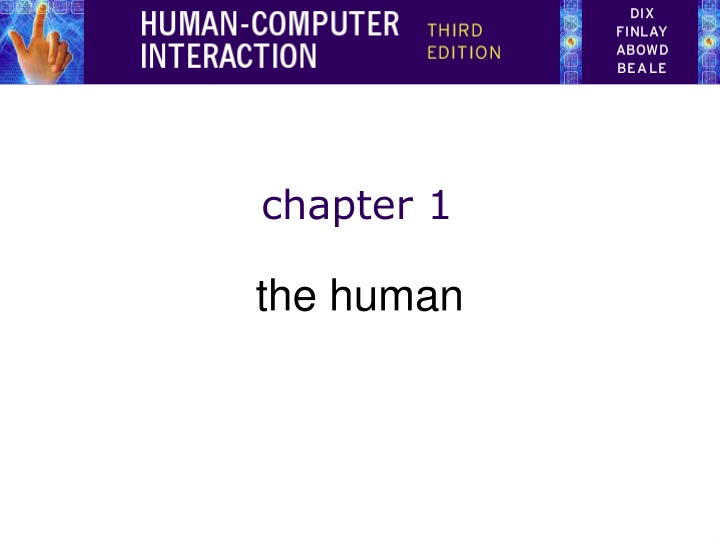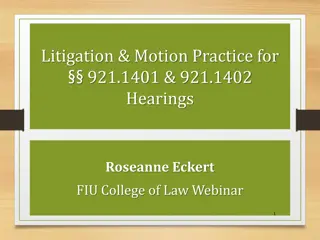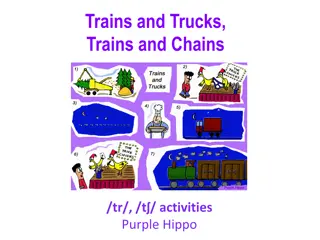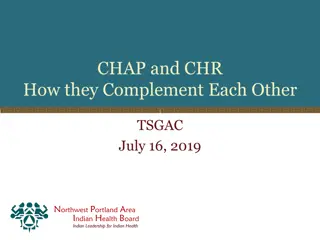
Human Vision Process and Optical Illusions
Explore the intricacies of human vision, from sensory input to cognitive processing. Learn about the visual system, the eye's mechanisms, interpretation of signals, color perception, optical illusions, and more in this comprehensive guide.
Download Presentation

Please find below an Image/Link to download the presentation.
The content on the website is provided AS IS for your information and personal use only. It may not be sold, licensed, or shared on other websites without obtaining consent from the author. If you encounter any issues during the download, it is possible that the publisher has removed the file from their server.
You are allowed to download the files provided on this website for personal or commercial use, subject to the condition that they are used lawfully. All files are the property of their respective owners.
The content on the website is provided AS IS for your information and personal use only. It may not be sold, licensed, or shared on other websites without obtaining consent from the author.
E N D
Presentation Transcript
chapter 1 the human
the human Information i/o visual, auditory, haptic, movement Information stored in memory sensory, short-term, long-term Information processed and applied reasoning, problem solving, skill, error Emotion influences human capabilities Each person is different
Vision Two stages in vision physical reception of stimulus processing and interpretation of stimulus
The Eye - physical reception mechanism for receiving light and transforming it into electrical energy light reflects from objects images are focused upside-down on retina retina contains rods for low light vision and cones for colour vision ganglion cells (brain!) detect pattern and movement
Interpreting the signal Size and depth visual angle indicates how much of view object occupies (relates to size and distance from eye) visual acuity is ability to perceive detail (limited) familiar objects perceived as constant size (in spite of changes in visual angle when far away) cues like overlapping help perception of size and depth
Interpreting the signal (cont) Brightness subjective reaction to levels of light affected by luminance of object measured by just noticeable difference visual acuity increases with luminance as does flicker Colour made up of hue, intensity, saturation cones sensitive to colour wavelengths blue acuity is lowest 8% males and 1% females colour blind
Interpreting the signal (cont) The visual system compensates for: movement changes in luminance. Context is used to resolve ambiguity Optical illusions sometimes occur due to over compensation
Optical Illusions the Ponzo illusion the Muller Lyer illusion
Reading Several stages: visual pattern perceived decoded using internal representation of language interpreted using knowledge of syntax, semantics, pragmatics Reading involves saccades and fixations Perception occurs during fixations Word shape is important to recognition Negative contrast improves reading from computer screen
Hearing Provides information about environment: distances, directions, objects etc. Physical apparatus: outer ear protects inner and amplifies sound middle ear transmits sound waves as vibrations to innerear inner ear chemical transmitters are released and cause impulses in auditory nerve Sound pitch sound frequency loudness amplitude timbre type or quality
Hearing (cont) Humans can hear frequencies from 20Hz to 15kHz less accurate distinguishing high frequencies than low. Auditory system filters sounds can attend to sounds over background noise. for example, the cocktail party phenomenon.
Touch Provides important feedback about environment. May be key sense for someone who is visually impaired. Stimulus received via receptors in the skin: thermoreceptors nociceptors mechanoreceptors pressure heat and cold pain (some instant, some continuous) Some areas more sensitive than others e.g. fingers. Kinethesis - awareness of body position affects comfort and performance.
Movement Time taken to respond to stimulus: reaction time + movement time Movement time dependent on age, fitness etc. Reaction time - dependent on stimulus type: visual ~ 200ms auditory ~ 150 ms pain ~ 700ms Increasing reaction time decreases accuracy in the unskilled operator but not in the skilled operator.
Movement (cont) Fitts' Law describes the time taken to hit a screen target: Mt = a + b log2(D/S + 1) where: a and b are empirically determined constants Mt is movement time D is Distance S is Size of target targets as large as possible distances as small as possible
Memory There are three types of memory function: Sensory memories Attention Short-term memory or working memory Rehearsal Long-term memory Selection of stimuli governed by level of arousal.
sensory memory Buffers for stimuli received through senses iconic memory: visual stimuli echoic memory: aural stimuli haptic memory: tactile stimuli Examples sparkler trail stereo sound Continuously overwritten
Short-term memory (STM) Scratch-pad for temporary recall rapid access ~ 70ms rapid decay ~ 200ms limited capacity - 7 2 chunks
Examples 212348278493202 0121 414 2626 HEC ATR ANU PTH ETR EET
Long-term memory (LTM) Repository for all our knowledge slow access ~ 1/10 second slow decay, if any huge or unlimited capacity Two types episodic serial memory of events semantic structured memory of facts,concepts, skills semantic LTM derived from episodic LTM
Long-term memory (cont.) Semantic memory structure provides access to information represents relationships between bits of information supports inference Model: semantic network inheritance child nodes inherit properties of parent nodes relationships between bits of information explicit supports inference through inheritance
Models of LTM - Frames Information organized in data structures Slots in structure instantiated with values for instance of data Type subtype relationships DOG COLLIE Fixed legs: 4 Fixed breed of: DOG type: sheepdog Default diet: carniverous sound: bark Default size: 65 cm Variable size: colour Variable colour
Models of LTM - Scripts Model of stereotypical information required to interpret situation Script has elements that can be instantiated with values for context Script for a visit to the vet Entry conditions: dog ill Roles: vet examines diagnoses treats owner brings dog in pays takes dog out vet open owner has money Result: dog better owner poorer vet richer Scenes: arriving at reception waiting in room examination paying Props: examination table medicine instruments Tracks: dog needs medicine dog needs operation
Models of LTM - Production rules Representation of procedural knowledge. Condition/action rules if condition is matched then use rule to determine action. IF dog is wagging tail THEN pat dog IF dog is growling THEN run away
LTM - Storage of information rehearsal information moves from STM to LTM total time hypothesis amount retained proportional to rehearsal time distribution of practice effect optimized by spreading learning over time structure, meaning and familiarity information easier to remember
LTM - Forgetting decay information is lost gradually but very slowly interference new information replaces old: retroactive interference old may interfere with new: proactive inhibition so may not forget at all memory is selective affected by emotion can subconsciously `choose' to forget
LTM - retrieval recall information reproduced from memory can be assisted by cues, e.g. categories, imagery recognition information gives knowledge that it has been seen before less complex than recall - information is cue
Thinking Reasoning Problem solving deduction, induction, abduction
Deductive Reasoning Deduction: derive logically necessary conclusion from given premises. e.g. If it is Friday then she will go to work It is Friday Therefore she will go to work. Logical conclusion not necessarily true: e.g. If it is raining then the ground is dry It is raining Therefore the ground is dry
Deduction (cont.) When truth and logical validity clash e.g. Some people are babies Some babies cry Inference - Some people cry Correct? People bring world knowledge to bear
Inductive Reasoning Induction: generalize from cases seen to cases unseen e.g. all elephants we have seen have trunks therefore all elephants have trunks. Unreliable: can only prove false not true but useful! Humans not good at using negative evidence e.g. Wason's cards.
Wason's cards 7 E 4 K If a card has a vowel on one side it has an even number on the other Is this true? How many cards do you need to turn over to find out? . and which cards?
Abductive reasoning reasoning from event to cause e.g. Sam drives fast when drunk. If I see Sam driving fast, assume drunk. Unreliable: can lead to false explanations
Problem solving Process of finding solution to unfamiliar task using knowledge. Several theories. Gestalt problem solving both productive and reproductive productive draws on insight and restructuring of problem attractive but not enough evidence to explain `insight' etc. move away from behaviourism and led towards information processing theories
Problem solving (cont.) Problem space theory problem space comprises problem states problem solving involves generating states using legal operators heuristics may be employed to select operators e.g. means-ends analysis operates within human information processing system e.g. STM limits etc. largely applied to problem solving in well-defined areas e.g. puzzles rather than knowledge intensive areas
Problem solving (cont.) Analogy analogical mapping: novel problems in new domain? use knowledge of similar problem from similar domain analogical mapping difficult if domains are semantically different Skill acquisition skilled activity characterized by chunking lot of information is chunked to optimize STM conceptual rather than superficial grouping of problems information is structured more effectively
Errors and mental models Types of error slips right intention, but failed to do it right causes: poor physical skill,inattention etc. change to aspect of skilled behaviour can cause slip mistakes wrong intention cause: incorrect understanding humans create mental models to explain behaviour. if wrong (different from actual system) errors can occur
Emotion Various theories of how emotion works James-Lange: emotion is our interpretation of a physiological response to a stimuli Cannon: emotion is a psychological response to a stimuli Schacter-Singer: emotion is the result of our evaluation of our physiological responses, in the light of the whole situation we are in Emotion clearly involves both cognitive and physical responses to stimuli
Emotion (cont.) The biological response to physical stimuli is called affect Affect influences how we respond to situations positive creative problem solving negative narrow thinking Negative affect can make it harder to do even easy tasks; positive affect can make it easier to do difficult tasks (Donald Norman)
Emotion (cont.) Implications for interface design stress will increase the difficulty of problem solving relaxed users will be more forgiving of shortcomings in design aesthetically pleasing and rewarding interfaces will increase positive affect
Individual differences long term sex, physical and intellectual abilities short term effect of stress or fatigue changing age Ask yourself: will design decision exclude section of user population?
Psychology and the Design of Interactive System Some direct applications e.g. blue acuity is poor blue should not be used for important detail However, correct application generally requires understanding of context in psychology, and an understanding of particular experimental conditions A lot of knowledge has been distilled in guidelines (chap 7) cognitive models (chap 12) experimental and analytic evaluation techniques (chap 9)






